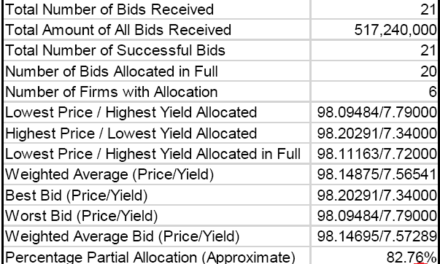
One more telltale sign central banks consult
The slight difference between the Namibian and the South African repo rates, was very brief indeed. This week the South African Reserve Bank announced the second increase to its repo rate, raising it by 0.25 percentage points to 5.75%. The raise is not significant but the increment is since it is exactly the same increment announced by the Bank of Namibia a week ago. This is the first signal of collusion, or should I rather say, a consultative monetary regime between regional central banks. The second signal is the fact that South African and Namibian rates are the same again, setting the stage, as I expect, for further increases in the local rate.
The Deutsche Bank analysts specialising on the southern African market could not help but gloat a little this week when they pointed out their earlier SA interest rate call was on the mark. “In an act to balance rising inflation risks with weakening growth, the Bank raised the repo rate by 25bps to 5.75%. This was in line with our call but the timing may have come as a surprise to some. In our view, the Bank had to respond to the spate of ongoing hawkish rhetoric regarding the uncomfortable levels of inflation and inflation expectations, and importantly, that recent upward drift in wage settlements may just add fuel to this fire,” said Deutsche Bank on Thursday evening.
But it also sounds as if they lifted this paragraph in their report from my commentary last week where I made the point that interest rate sentiment (or rhetoric) is just as important to determine interest rates, as are actual economic and market conditions. Another point I argued is that neither credit nor inflation is at unprecedented levels. As a matter of fact, perusing the history of the last decade, and as a percentage of nominal growth, they are very much in line.
But Deutsche Bank also points out that inflation, or more importantly, future inflation expectations will be more a function of exchange rate weakness, than inherent inflation drivers.
In my view I see local credit extension as a catch-up reflex and not as a leading cause for inflation. And since we have seen a slight moderation in energy prices (via the Namibian diesel price earlier this month) and a more substantial relief in food prices, there is room for downward adjustment to so-called headline inflation, i.e. the one that grabs you in the pocket. The Deutsche analysts point to the same variable, also arguing that future inflation may be lower than currently forecast if food and energy both track lower. I agree with this view holding in mind that we are not nearly at historical highs for inflation.
Fundamentally, however, when one discusses short term interest rates, the long end of the yield curve must be used as a benchmark. Although, for technical reasons, long-term interest rates on government and commercial paper are always higher than short-term rates, it is the differential that is important. And I do not see the long end of the curve move upwards substantially, at least not in comparison to the moves witnessed at the end of last year, and into the first quarter of this year when hot dollars fled the South African bond market overnight.
When one looks at the long end of the curve, it is also important not to view any single market in isolation. It is therefore very important to cast an eye on what is happening in American and European capital markets. And the signals I get from there is what alerts me to the fact that the long end of the curve is more likely to remain flat than to go up. Both American and European equity markets are in my view, heavily inflated. Of course this works mostly as a function of US dollar liquidity, and it is everybody’s guess when, how fast, and by how much, the US Federal Reserve will start trimming its bond and impaired asset purchases. The giddiness of investors, waiting for some clue, was clearly demonstrated by the gyrations earlier this year when the Governor just stated the common sense view, tapering has to start at some point, and at some pace.
When US liquidity starts to recede, I believe we shall see a major correction in equity markets. The conditioned response is always to pile into bonds, be it in the US, UK or Germany, and the outcome is the same – the long end of the curve flattens. Given that the US Government now pays only about 2.5% for its longer dated bonds, and the German Government pays a paltry 1.2%, I do not see much room for a worldwide increase in short term rates. On the contrary, I expect global rates to start xeroxing the Japanese example.
On my horizon, any rate increase will be short lived, and global trade will help keep rates low.











































